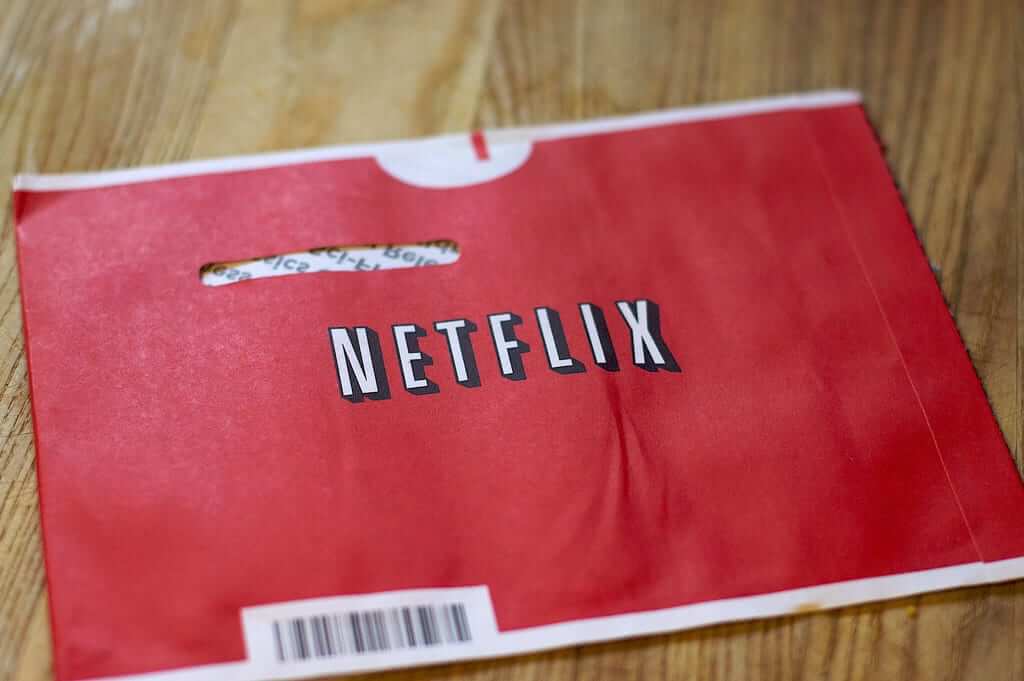As part of its overall strategy, Netflix actively employs intellectual properties in its attempt to innovate and secure its long term competitive advantage. Reflecting the nature of its business model which sees several different service offerings, rather than focus on a particular intellectual property strategy, Netflix utilizes a variety of different intellectual properties in its attempt to limit the appropriability of its core services as well as to protect itself from potential infringement suits.
Patents
Since, its early days as a mail DVD rental subscription service, Netflix has actively applied for many patents that aim to protect many aspects of its core service. Specifically, Netflix has filed and been granted patents for its rental processing system (7848968), the envelopes it uses(6966484) and its rental management system (7546252) to name a few. Notably, Netflix has also strategically acquired a combination of patents that have to a great extent, helped secured its unique business model. Particularly, Netflix has patented its unique processes and approaches, such as patents for its computer-implemented approach to renting (6584450 & 7024381), as well as its approach of allowing renters to hold onto rentals indefinitely without incurring late fees. Both of which, Netflix has employed in a lawsuit against Blockbuster when its competitor attempted to move into its arena of online mail rental services. Having moved into digital streaming services, Netflix has also acquired countless of patents that underlie the technology as well as the technical processes of the streaming service such as digital content distribution systems & methods (8433814), server signalling methods (8443056) and adaptive streaming technology (8631455) as prominent examples. Many of these patented technologies (such as those mentioned) allow Netflix to deliver a unique but yet seamless service experience.
Trade Secrets
Nevertheless, developed technology is prone to periodical updates in an ever changing landscape and the patenting process undoubtedly reveals the underlying technology as part of its qualifying process; as such Netflix has also heavily employed trade secret to guard many of its proprietary technology, especially in its current digital streaming services. Netflix has implemented strict mechanisms to safeguard its interests. For example, Netflix employees are made to sign confidentiality agreements prior to their employment and involvement with the company, and the company has proactively ensured that compliance with confidentiality is realized as it has actually brought suits against former employees alleged to have stolen trade secrets. Within the current Netflix business model, the most fiercely guarded trade secret would be its proprietary Recommendation Engine, CineMatch, which matches content recommendation with the user’s profile and actions. Netflix has not formally patented its recommendation algorithms and has relied on secrecy over the engine, which have been difficult for many competitors to reverse engineer.
Copyrights
The software, content as well as website that Netflix has created are duly copyrighted. Copyrights feature itself in several forms in Netflix’s current business model, depending on the service examined.
DVD Rental Service:
For its DVD rental service, Netflix purchases the movies in wholesale supply based on its own analytics and proceeds to rent it out. Under the current U.S. law, copyright owners possess the exclusive rights over the distribution of a copyright. However, that right is subject to the first-sale doctrine, which states that the right to control the distribution of the copyrighted content generally ceases after the initial sale of the copy. After the first-sale doctrine, the copyright owners have limited rights over content within the secondary market.
Online Content Streaming:
In order to carry out its streaming services (and the streaming of content), Netflix negotiates with content owners as copyright owners, they possess the rights over the public performance of the work which include its transmission. At the same time, Netflix also licenses the rights to reproduce the content as the process of streaming requires the reproduction of a work on Netflix’s server in order to efficiently deliver its service.
Original Content Production:
Netflix has also enjoyed copyrights in its own content. As content producers, it automatically becomes the copyright owner of any content it produces (such as the House of Cards, etc.). This would essentially subject any other competitors and players in the industry to Netflix’s exclusive rights conferred upon the company over the content’s use and distribution; as such popular Netflix produced content such as House of Cards and Orange is the New Black have only been streamed on Netflix to date and not on major online or television networks.
Trade Marks
Netflix has employed numerous trademarks to ensure that its brand value and assets are diminished or compromised.
Analysis of Netflix’s Intellectual Properties
The ability of Netflix to protect and enforce their intellectual property rights is subject to certain risks. To date, the company has relied primarily on proprietary processes and know-how to protect their IPs. Obtaining patents can also be costly and time consuming, costs vary but can easily exceed $10,000 in legal and administrative fees, applications are generally published 18 months after the earlier priority date.
Netflix’s patent portfolio primarily protects aspects of its DVD-by-mail business, they own pending U.S. patent applications that cover technologies to improve and optimise on-demand streaming video delivery. Significant amounts of pending patent applications suggest that Netflix’s current R&D focus is in-line with its business shift towards on-demand video streaming.
Patents confer upon the company to a right of ownership, determining who can and cannot use or dispose of it. Netflix can potentially gain huge awards for parents infringement, the patents computer-implemented approach to renting (6584450 & 7024381) gives Netflix the legal protection to the unique process and approach, consequently raising the monetary or market value.
Nevertheless, Netflix’s patents do not seem to grant them an advantage over new entrants, competitors do not face significant patent barriers from Netflix, as the company’s US patents are more skewed towards its traditional DVD-by-mail business, and also unlike the unique inventions, processes and approaches, ideas cannot be owned. Furthermore, it is important to consider whether patents are appropriate for important technologies that underlie Netflix, as patenting requires comprehensive publication which may facilitate distinct imitation or adaptation from competitors. This would suggest that the company’s current approach of employing trade secrets in its streaming service to be the appropriate strategy.
The utilization of trade secrets however has to be considered in light of the potential benefits that may come from sharing its proprietary information. Sharing can actually benefit innovators more than withholding it, to some extent as proven in some open source innovation business models. Netflix has realized this as in a surprising recent move, the company opened an aspect of its engine to open innovation by revealing a portion of its database to developers with the aim of inciting them to improve the engine. Another example would be House of Cards, where Netflix worked closely with the production company MRC in creating this 9 Emmy-nominated show. House of Cards was MRC’s first move into television, and it was also Netflix’s first original show. During production, Netflix fed important data about user preference and behaviour that it had in its database gathered from its preference analytics, in order to strategically appeal to its viewers. Partnering with MRC allowed the cross-utilization of technical know-how and proprietary data, further it eliminated the pressure to move fast in order to make their first original series, which gave Netflix and MRC (which could have potentially been a competitor), just enough to reduce the risks of concurrent developments and produce a strong hit. This kind of approach may create strong value as well as greater control over the timing of new ideas or technologies and thus significantly reducing the costs of their R&D.
The company also has registered trademarks and service marks for the Netflix name and have filed applications for additional trademarks and service marks. Trademarks provides brand identity and allows others to easily identify the company easily. These trademarks prevents the company against identity theft and attempts to capitalise on recognition and reputation. However, Netflix trademarks do come with disadvantages.
First, the owner will need to show proof of use at regular intervals, the first submission is between 5-6 years after registration, the second is 5 years later and every 10 years thereafter, which can be troublesome. If the owner fails to file these documents on time, it could lead to the loss of trademark. The trademark is also described as the weakest form of intellectual property protection as it protects just marketing concepts and not always product itself. Therefore, trademark should go with other intellectual property rights like patents. Another disadvantage for trademark owners is that they will have to pay fee for registration and renewal. The fee depends on the number of classes of products that are covered in the application and some more additional fees.
Recommended IP Strategy for Netflix
With their current business model, Netflix is competing in an ever changing and competitive marketplace. Thus, in order to continue to stay ahead of competition and build the longevity of their brand, the approach and management of their intellectual properties strategically is important.
Although patenting has traditionally been an important protection mechanism for many businesses, (as has been discussed, was heavily utilized by Netflix in its traditional DVD-by-mail service,) Netflix’s focus and venture into the digital space necessitates a strategic reliance on patents with a stronger emphasis on utilizing trade secrets as well as the careful deployment and utilization of these assets in attempts to innovate and create value.
Netflix’s imitability is currently low in terms of its vast digital media library and its proprietary technologies, as its key assets are seemingly well protected by current IP strategies and tightly held. Yet these barriers can either diminish or continue to grow depending on how Netflix approaches the management of its IP. Notably, Netflix’s digital library consists of licensed and self-invested streaming content, which have been key value drivers for viewers. For licensed online streaming of its partner’s content, Netflix usually holds an exclusive broadcasting contract with a limited period of time. This allows the Netflix to gain a temporary monopoly rent in short term. However, the cost of such a contract is substantial (which has resulted in Netflix’s striking-out certain content) and it cannot prevent competitors from gaining access in the long term as well. In this sense, its move towards investing in original content production provides a strong foundation for achieving differentiation and competitive advantage as it holds the copyright over its original content and it could attempt to realize new revenue streams via broadcast licensing. Nevertheless, this has to be approached strategically as well as the costs of such endeavours should not be overlooked as well.
In the long term, Netflix should continue to focus on developing brand value, with an outlook to expanding globally. Over time they may be able to capture massive markets in developing countries with the leverage of their brand. Yet fully going global is definitely a challenge for Netflix. Not only are the social aspect of viewing different in different countries, but also more importantly, there various IP rights and contract issues may arise in different jurisdictions that necessitates a modified approach. In order to overcome some of these issues, Netflix must be ready to adapt to different models in order for them to capture rents in those countries.
A possible way of penetrating emerging markets could be to license country-specific content (e.g. license Bollywood movies in India) in order to both adapt to different cultural differences and reduce dependency on major western production companies.
Ultimately, Netflix has developed a strong innovative business model and generally adopted the right approach towards managing its IP in an ever developing landscape. The future of Netflix will depend on how the company will be balance the importance of minimising costs and implementing innovation, with need to secure the crucial intangible assets that define its business models.





























